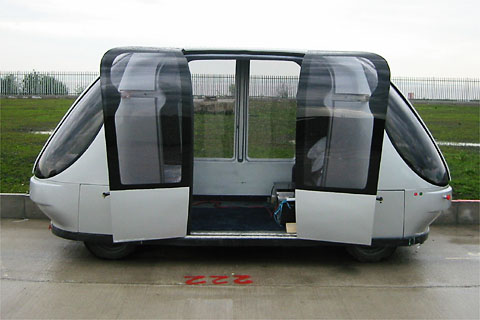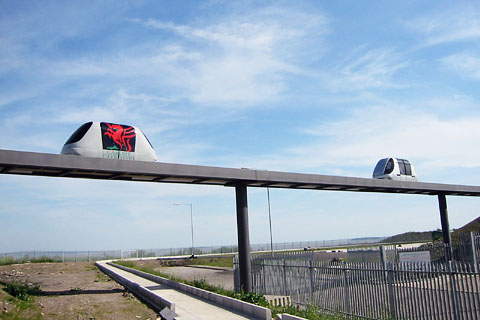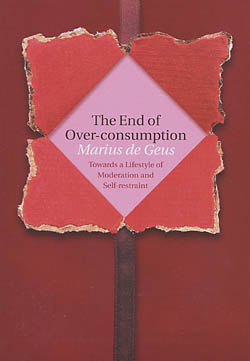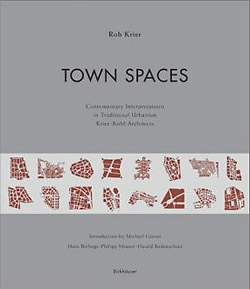
|
||
|
Issue 33 |
|
5 January 2004 |
 Next-generation ParkShuttle automated mini-bus Feature Article on Local Transport ©2003 J.Crawford News at Carfree.comThis issue of Carfree Times is available in German. Thanks to Ulrich Nehls for the translation.This issue is also available in Spanish. Thanks to Ricardo Eid for the translation. Towards Carfree Cities IVWorld Carfree Network has announced the Towards Carfree Cities IV conference, to be held in Berlin on 19-24 July 2004. The conference will bring together people who are promoting practical alternatives to car dependence. The transformation of cities, towns, and villages into rich, human-scaled, pedestrian environments is also a goal. This year's focus is on strategy, collaboration, and exchange that will assist participants in their work.The conference is being organized by World Carfree Network in partnership with BUND (Friends of the Earth Germany), Green City, Autofrei Wohnen, Autofrei Leben!, ITDP Europe, and UMKEHR. Pre-registration and further information are available at WorldCarfree.net. Carfree Cities AvailabilityBoth the paperback and hardcover editions of Carfree Cities are widely available. The paperback edition costs US$17.95 in the USA and the hardcover $29.95. For details, see the Ordering Information page. Stocks of the hardcover edition are running low.Carfree Design HandbookTwo of the four parts of the forthcoming Carfree Design Handbook are now in full draft form. The book is still about a year away from publication. It now appears that it will run some 600 pages and include 1000 illustrations.E-Mail SubscriptionsSubscribers to the E-mail notification service of Carfree Times will not receive notifications if we receive a challenge from Mail Blocks. All returned mail, regardless of cause, results in the deletion of the subscriber's address. We regret the need to take such drastic action but cannot otherwise handle the volume of returned mail. Please make sure that we have a good address (and please provide any address that should be deleted or changed). Mail Blocks users can approve the carfree.com domain as a recognized sender. E-mail notification is increasingly a problem and may eventually be dropped.Spamnix in UseMail sent to Carfree.com is now being filtered by Spamnix. All legitimate mail seems to be coming through, but if you don't have an answer in a reasonable period of time, try again with a different subject line and a mail client other than Microsoft Outlook.Spanish Translation of Carfree IntroductionThe Introduction at Carfree.com is now translated into eight languages, the newest of which is Spanish, thanks to David Ceaser and Patricia Santos. |
QuotableEven when there's no law governing people, repeated interactions, especially face-to-face ones, can give rise to cooperation and eventually institutions, norms and practices that continually improve. But on the road, people are in their own bubble, sealed off from each other, and they scarcely worry about repeated interactions. Daniel Klein, an American economist who has studied both
modern traffic problems and the evolution of cooperation |
News BitsBam DestroyedA recent earthquake all but destroyed the ancient Iranian city of Bam, with extremely heavy loss of life. Carfree Times would like to see this heritage city rebuilt in the same form as it was, this time with construction that can withstand earthquakes. While data is hard to come by, it is nearly certain that most of this city was carfree before the earthquake, and we hope that this will be retained and expanded (if need be) during the reconstruction. To rebuild this city with streets wide enough for heavy car traffic would be to destroy its heritage.Nader Khalili has updated traditional Persian architecture with a design that non-architects can build themselves. This design surpasses California earthquake standards and is code-compliant. A prototype on the San Andreas fault has survived a large earthquake. Perhaps this approach, fitting for the region, could be applied in the reconstruction of Bam.
More information: Cal Earth |
Montreal's Carfree DayMontreal temporarily closed 10 downtown blocks in a "symbolic attempt to combat pollution." For more than five hours, the area in the heart of Montreal was quiet and the air was cleaner. Car noise was replaced with the sounds of bicycles, scooters, and footsteps. Ste-Catherine Street, normally a traffic nightmare, looked more like a European-style pedestrian area. Montreal joined a thousand other cities around the world for Carfree Day and by so doing became the first Canadian city to hold a weekday carfree day. Mayor Gérald Tremblay said, "You can make all the nice speeches you want about the Kyoto accord and sustainable development. In Montreal, we said: We're going to change things." Ridership on Montreal's Métro rose by 10%, or 16,000 riders. There were the usual sour grapes, but nothing too serious.
"Taming the
automobile in Montreal's core" |
Survey Says: People Really Like Carfree DaysOnce again, people have been surveyed on Carfree Day, this time 410 people interviewed in the UK on Carfree Day 2003. Of all those polled:
"To reduce traffic and pollution in your town, car use must be limited."
Results courtesy Richard Evans, In Town Without My Car! UK Co-ordinator. The full results are at the following web site: |
Carfree ProgressSmall carfree developments continue to proliferate in Germany. A large number are partially carfree. Two new ones are almost completely carfree:
Submitted by Erik Rauch The Politics of Suburban SprawlJoel S. Hirschhorn, publisher of the Sprawl Kills web site, recently published an article at CommonDreams.org. Three interesting quotes:An enormous amount of market research and surveys over recent years shows that well over one-third of home seekers want an alternative to suburban sprawl un-places. The odds of them finding a home in a place designed on the basis of New Urbanism, smart growth, or traditional neighborhood design principles, however, is over 500 to 1 against them. The way that the sprawl industry maintains its grip on the housing market is through its sprawl lobby. Literally everywhere in the United States, from Florida to Hawaii, enormous sums of money, both legal and illegal, are provided by sprawl industry groups to politicians, local government officials and state legislators. Whenever data are collected on the monies provided by various business sectors to local and state campaigns, and in battles over certain ballot initiatives, the sprawl industry ranks at or near the top. Long ago sprawl interests understood that they had to spend money to control local planning and zoning systems to keep sprawl land development’s primacy. Despite sprawl’s power, about 200 true smart growth and New Urbanism communities and neighborhoods have been built around the nation, with more going up all the time as innovative and courageous developers conquer the obstacles the sprawl lobby has nourished over decades. Most importantly, these places are achieving considerable financial success because the actual and latent consumer demand for alternatives to sprawl is so great. Most importantly, most of these smart growth type projects are in suburbia. In other words, there is no longer any reason to equate suburbia with sprawl.And there is no longer any reason for banks to decline to fund these projects, which are clearly more certain of success than conventional sprawl development.
"Time to Recognize the Politics of Suburban Sprawl" |
Governor HummerRight-wing ABC News recently said of California's Governor Schwarzenegger:To make up for $4 billion lost when he cut the unpopular car tax, the governor will make a $40 million payment to local governments to keep them from closing facilities and laying off police officers and fire fighters, aides said Wednesday, speaking on condition of anonymity.This is the same governor who has a matching collection of Hummers. The car tax had been raised by former Governor Gray Davis in an attempt to avert fiscal collapse in California. Oddly, there's been no talk of reinstituting the tax. Maybe Gov. Hummer is too poor to pay the higher tax rate on his collection of Hummers (probably the most polluting and dangerous car on the road).
"Schwarzenegger to Declare Money Emergency" Fool CellsWord is starting to get around regarding the nearly insurmountable difficulties that face auto-makers in using fuel cells to power cars. The cost at present is far too high, and not a great deal of progress has been made in commercializing this technology, which was first applied in the US space program during the 1960s.Donald R. Sadoway, professor of materials engineering at MIT said, "As far as I know, no one who is technically literate is an enthusiastic supporter of fuel-cell-powered vehicles." According to an EETimes article: For fuel cells to reach production automobiles by 2020... scientists need a Nobel Prize-winning breakthrough to cut the cost of the technology by a hundredfold or more.The problems are the precious-metal catalysts and the special membranes (cost $100/square foot) required. There are also longevity issues. Political analysis: Bush & Co. didn't want to do anything that might harm the US auto industry, so they pulled the rug out from under the Japanese, who had actually developed successful hybrid systems that are very clean and quite fuel efficient. The American manufacturers were threatened by California's proposal to require the sale of very low emission vehicles, so the chimera of the fuel cell was held up, along with the promise of huge subsidies for US manufacturers to attempt to develop the fuel cell, a prospect that is comfortably far (for the manufacturers) in the future. In the meantime, they'll happily take the money to run a fool's errand.
"Fuel cell R&D is far from easy street" |
And Now, the WeatherInconveniently for Bush's re-election chances, the irksome but prestigious American Geophysical Union (AGU) recently called for a worldwide study of how the Earth will change as warming continues. The AGU says CO2 concentrations may be climbing faster now than at any time in Earth's history.It is virtually certain that increasing atmospheric concentrations of carbon dioxide and other greenhouse gases will cause global surface climate to be warmer. The complexity of the climate system makes it difficult to predict some aspects of human-induced climate change: exactly how fast it will occur, exactly how much it will change, and exactly where those changes will take place.Oh dear. Better beg some more money from Exxon/Mobil. It's going to be a long, hot election campaign.
"US science body warns on climate" |
Feature ArticleLocal Transport Using Self-Guided Vehiclesby J.H. Crawford ©2003 courtesy ATS Small transit vehicles, such as the one above and the one that heads this issue of Carfree Times, have a role to play in many carfree implementations. While it would be preferable to use underground rail systems for all public transport, this ideal will not be achievable in many existing urban areas, and we need practical methods for converting these areas into carfree districts. Since few carfree conversions will be feasible without improved public transport, we should welcome any approach that helps to achieve this goal while minimizing the impact on other street users. In the early 1980s, I was involved in some early container terminal automation projects. The technology was then cutting edge, and problems were rife. The fastest microprocessors of the day were barely up to the task of manipulating the necessary data. Start-up problems were often "challenging." Since that time, a great deal of progress has been made in the development of self-guided vehicles, and obstruction detection has forged ahead. The technology is now mature and is seeing quite wide application. FROG ("Free Ranging On Grid") Navigation Systems has developed sophisticated vehicle guidance and obstruction detection. While speeds are generally low, passenger vehicles have been in service for some time in various locations, notably long-term parking at Amsterdam's Schiphol Airport, where a first-generation automated shuttle will soon be replaced by the newer, larger ParkShuttle shown at the top of this issue. Frog has been instrumental in the development of a variety of self-guided vehicle projects, including pallet movers (used to shift loads in warehouses), container terminal movers, and the Phileas, a large double-articulated bus now undergoing final test that can operate in fully self-guided mode. GuidanceGuidance was once the most challenging problem in developing self-guided systems. A variety of techniques was applied to the problem, not always with success. Frog navigates by means of electronic maps used for route planning and object avoidance. As they move, the vehicle measures both distance and direction traveled by counting wheel revolutions and keeping track of the steering angle. External references (often magnets) are used to recalibrate position before small errors can build up. Combined with automated supervisory systems that detect excessive error conditions, the technology appears finally to have become reliable, and failures are detected in time to allow fail-safe shutdown. The availability of high-resolution GPS services will further simplify the task.AccuracyAs with so many things in computer automation, the accuracy of steering and path-finding of automated vehicles now considerably exceeds that of human operators. In fact, in a recent trial, the mini-buses followed their route so accurately that they wore grooves in the asphalt, which needs to be especially hard to withstand the regular passage of vehicles over exactly the same path.SafetyThe detection and avoidance of fixed obstacles is now commonplace with this technology. The vehicle knows at all times where it is, where it is going, and the route to follow. The locations of fixed obstacles are known to the system, and the vehicle automatically avoids them. What of moving obstacles, especially pedestrians? While the development of computer vision systems has proven stubbornly difficult, other approaches to detecting obstacles have been applied and have so far built a good record. Sonar, laser, and radar are useful in specific circumstances.It is still too soon to put an automated vehicle into the middle of a busy street, and this may remain a limitation for a long time to come. When there is comparatively little foot traffic and the vehicle can be assigned a relatively broad right-of-way which few pedestrians should cross, the technology is already good enough. Acceptable safety is achieved by keeping speeds low and using sensors to constantly sweep a fairly large area in front of the vehicle for the presence of moving obstructions. This approach probably would result in an excessive number of unplanned stops if the vehicles were set up to operate in a crowded street. PowerVarious power sources can be applied to vehicles of this type. When speeds are low and distances comparatively short, conventional batteries are adequate. The vehicle knows when the battery is getting depleted and will take itself to a charging station. In fact, almost any form of motive power will work with these systems, and the Phileas bus will use hybrid propulsion.While auto-makers have given up on battery-powered cars, the design parameters for cars are far more demanding than for local-service vehicles. Top speeds of at least 70 MPH (110 km/hr) are required, and a minimum range of 100 miles (160 km) is regarded as essential. While GM's EV-1 could reach these goals (with a new battery), GM determined that the concept did not merit further development and has withdrawn the vehicles from service. In local circulation service, top speeds will typically be in the range of 20 MPH (30 km/hr), and the length of a run will be measured in a few miles (kilometers), with the possibility of recharging after each run. It will thus be seen that battery-powered vehicles are already practical in urban situations (and have, indeed, seen such use for a century).
©2003 courtesy ATS Overhead?I have long opposed overhead transit systems, mainly on the grounds of visual intrusion and noise. Being a realist, I also have to admit that some of these systems will be built, as the cost is much lower than tunneling. When the vehicles are small and light, the loads the guideway must withstand are low, and a fairly slender structure, such as the ones shown above, is adequate and not terribly intrusive. It is thinkable to put such systems overhead in urban areas, unlike metros and monorails, which are simply too big, too heavy, and too noisy to make overhead locations acceptable.ConclusionThese systems are not cheap, but their fully-automated operation should bring their total cost of operation, including capital costs, within reach of more prosperous cities. They permit the operation of small-scale public transport service at comparatively low operating costs, principally because there is no driver to pay. Systems like these are comparatively quick to deploy and quite flexible, so that routes can be altered and extended without an enormous investment. Now that this technology has been developed and matured, there is no further reason to delay its implementation in urban areas.More InformationThe following sources offer further details of these systems:
Frog Navigation Systems
Thanks to Robbert Lohmann at Frog for the plant tour and a thorough explanation of Frog's products, present and future. |
|
OpinionPep TalkBy J.H. CrawfordIt's hard times. I seem to get a little more depressed every morning when I read the news. Not only is there rarely any good news, the bad news is sometimes staggering. How could things have turned so bad so fast? Just how much worse is this all going to get?I don't pretend to know. It could get very much worse. Maybe we'll be lucky and it won't get a lot worse than it is. Maybe things will even get better. There is only one way that will happen, and that is if concerned people around the world spend time, effort, and money to try to make it happen. There are billions of people who want a better world. They are a potent force for good. Arrayed against us are mainly huge corporations and extremely rich people. They have seized power in the USA and are not likely to let go without a struggle. Because so many of the world's problems today have their roots in the policies of Bush & Co., it is crucial for Americans to stand up and be counted in the coming election. The USA is so powerful that only a change in US policy can lead toward a better world. Without Kyoto and the many other treaties abrogated by Bush & Co., real progress is probably not possible. The Bush-style American unilateralism must end on 20 January 2005, with the inauguration of a more reasonable president. It's time to throw the bums out. Do something towards this end. Start now.
|
New BooksCarfree Times now receives so many books that routine reviews have become impossible. Instead, we will endeavor in this section to mention interesting new titles soon after their release.
This book examines the norms, values, and beliefs that contribute to modern environmental problems. The author contends that individuals must simplify their lives and show self-restraint to avoid wasting the Earth's resources. Governments must translate moderation and limitation into effective policy measures and adapt economic, social, and political institutions accordingly. The thesis is that individuals will eventually be forced to simplify their lives to protect the environment, but this simplification does not in itself impose a marginal standard of living or an ascetic life. The book argues that we should seek a middle ground between extreme consumption and total austerity.
Putting the notion of moderation and self-restraint on the political agenda of the West will be difficult and take decades. Once the issue achieves prominence, governments will have a mandate for the difficult task of translating moderation and self-limitation into policy. We must begin to initiate policies that make room for consuming less, not more.
This big book was received an hour before press time, and I have taken the liberty of quoting below the publisher's blurb, which appears to be an accurate reflection of the book's contents. Rob Krier and his brother Léon are some of the most original thinkers in architecture and city design today, and their works are, in my experience, always enlightening. The book is very richly illustrated and carefully prepared. In response to the sense of crisis in many of today´s towns the proponents of new traditionalism offer a form of urban planning which looks back to more traditional styles whilst firmly integrating the requirements of modern life. Their designs are easily accessible and characterised by a sense of public spirit, identification, and order.
This is the third edition of this work, which forms a central pillar of a regularly revised four-volume set. Written from a British perspective, the book is illustrated with many drawings and photographs from European cities. The book begins with a consideration of basic design concepts and proceeds to a consideration of various design elements, in particular streets, squares, and waterways. The discussion continues with chapters on sustainable urban form, visual analysis, and some interesting case studies. There is scant mention of pedestrianization, but it is acknowledged that cars have a large effect on urban design. The success of some pedestrianized areas in Europe is mentioned. Whether by coincidence or otherwise, many of the photos show few or no cars, which always displays an area to best advantage.
|
Hot LinksVisit the Links section for 350 links sorted by category. Below are the newest links, which will open in a new browser window:Bogotá designs transportation for people, not cars Shanghai ends reign of the bicycle Big and Blue in the USA by James Howard Kunstler in the New Colonist A Tale of Two Spaces A Word from Richard Risemberg, December 2003 What Are They Afraid Of? In Smart Growth's Widening Wake, A Stream of Venom, by Keith Schneider in the New Colonist Transport and Energy Bucking the trend Saddam, Oil and Empire: Supply versus Demand The Political Economy of Terror oil shortages and violence in Saudi Arabia Warming Climate More Deadly than 9/11/01 Terrorist Attack Leonardo DiCaprio on global warming UITP Better passenger information contributes to public transport ridership External Costs: Damages arising from electricity and transport (PDF!)
About Carfree TimesNext IssueThe next issue of Carfree Times is scheduled for April 2004.Subscribe to Carfree TimesCarfree Times is published quarterly at Carfree.com. To receive e-mail notices of new issues, please visit the subscription page or send e-mail with the word "Subscribe" in the subject line. We do not share our mailing list. Write for Carfree TimesInterested in writing for Carfree Times? We welcome articles on a wide variety of subjects, and offer an opportunity to publish letters to the editor and guest editorials. Drop us an e-mail. |
Contact Information
Carfree Times Home Continue on to Carfree Times Issue 32 About the book: Carfree Cities
E-mail
|



